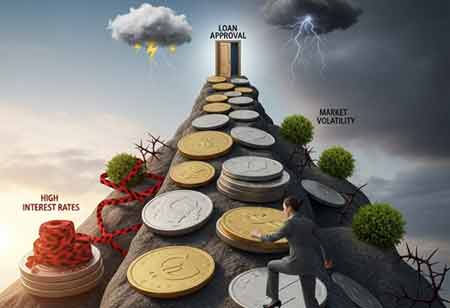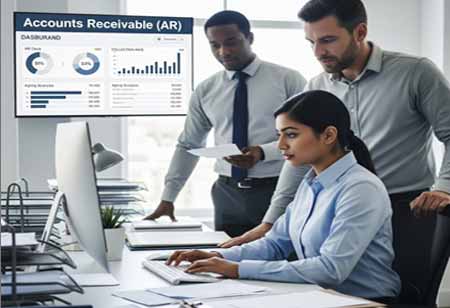CLOSE
Specials
- Trading Solutions APAC
- Wealth Management MENA
- CPA Firms Canada
- Financial Risk Management APAC
- Investment Banking APAC
- Corporate Advisory APAC
- Regtech APAC
- Escrow Services
- Digital Banking Latam
- Investment Advisory APAC
- Treasury Management Europe
- RegTech Europe
- Financial Risk Management Europe
- Mortgage Broker
- Financial Licensing Europe
- RIA Advisory Europe
- FinTech Canada
- Financial Asset Management APAC
- Financial Health Europe
- Trading
- Investment Services Europe
- Lending Mangment Latam
- Payment Solution Europe
- Broker Dealer Firms Canada
- Alternative Investments Canada
- Financial Fraud
- Investment Management Latam
- Investment Banking Canada
- Lending Management
- Payment Solution
- Proprietary Trading Europe
- Wealth Management
- FinTech
- Financial Brokerage Firm APAC
- Investment Advisory Europe
- Claim Adjusting
- Claim Adjusting APAC
- Mergers and Acquisitions Consulting APAC
- Equipment Financing
- CPA Firms
- Mergers and Acquisitions Consulting Canada
- Investment Services
- Valuation Services Canada
- Wealth Management APAC
- Broker Dealer Firms
- Debt Collection Agencies
- Mergers and Acquisitions Consulting
- FinTech Europe
- Fintech Latam
- Financial Planning / Retirement
- Investment Management
- Financial Compliance
- Payment and Card Latam
- Financial Marketing
- Investment Services Latam
- Digital Insurance Europe
- Alternative Investments
- Trading Solutions Europe
- Tax Advisory Canada
- Mergers and Acquisitions Consulting Latam
- Wealth Management Latam
- Digital Banking Europe
- Business Loan
- Financial Portfolio Management Canada
- Financial Restructuring Europe
- Mergers and Acquisitions Consulting Europe
- Wealth Management Europe
- Debt Collection Agencies Europe
- CFO Services
Weekly Brief
×Be first to read the latest tech news, Industry Leader's Insights, and CIO interviews of medium and large enterprises exclusively from Financial Services Review
Thank you for Subscribing to Financial Services Review Weekly Brief
How technology is changing the future of audit and assurance services
The definition of an audit and what it comprises are being redefined by technological advancements that are gaining traction in the auditing industry.

By
Financial Services Review | Wednesday, May 31, 2023
Stay ahead of the industry with exclusive feature stories on the top companies, expert insights and the latest news delivered straight to your inbox. Subscribe today.
The definition of an audit and what it comprises are being redefined by technological advancements that are gaining traction in the auditing industry. A number of cutting-edge technologies, including machine learning, robotic process automation, block chain, and artificial intelligence, all of which are in various stages of development, have already had a significant impact on the provision of audit and assurance services.
Fremont, CA: The definition of an audit and what it comprises are being redefined by technological advancements that are gaining traction in the auditing industry. A number of cutting-edge technologies, including machine learning, robotic process automation, block chain, and artificial intelligence. The adoption of new technologies brings about a number of advantages, including improved operational effectiveness, more thorough and comprehensive audits, greater financial inclusion, and better decision-making processes.
Data Analytics
Data analytics aims to derive insights from unprocessed data to support decision-making. Data sets can be transformed into a pre-set, understandable format, making it easier for auditors and clients to spot patterns and draw conclusions. The key benefit of adopting data analytics is that it can give auditors a more comprehensive view by considering the entire population of transactions rather than just a small sample. Auditors are anticipated to provide clearer insights into areas of increased risk as a result of the wider data coverage, as well as to be more diligent and accurate when looking for anomalies using "data-mining" technologies.
Machine learning
Artificial intelligence is used in machine learning, which is the practice of employing algorithms and data to educate a computer to learn without explicit and direct instruction. It automates the creation of analytical models, which are then used to produce forecasts and spot patterns in data analysis. As machine learning is an iterative process, the more relevant and repetitive data a machine receives, the better it will be able to identify patterns, and the more reliable it will be at recognizing them.
Robotic Process Automation
Robotic process automation ("RPA") aims to replace human labor in repetitive and routine activities, whereas artificial intelligence ("AI") aims to mimic human intelligence. A reasonable comparison would be to compare it to extremely sophisticated Excel spreadsheet macros. The first is the "thinker," and the second is the "doer." Data scattered across multiple systems must be merged or fed into one system using RPA. This kind of work would involve repeatedly entering and exiting systems and copying and pasting information. Humans struggle to maintain an optimal level of concentration for long periods of time, in contrast to robots.
Block chain
Blockchains are distributed, immutable ledgers that record every transaction from its inception. Everyone has access to these ledgers. Transactions share a consistent and identical picture of records since they are only recorded once. Due to block chain's immutability, it is also tamper-resistant: An entry must be added to remedy an error in an existing entry. All participants could see both entries, creating a transparent audit trail. In an audit, blockchain can confirm reported transactions.
Technology is more of a friend than a foe
Artificial intelligence and similar technologies must now be seen more as friends than enemies as a result of disruptive technologies, which allow auditors to provide even more reliable assurance to their clients. Human auditors will continue to be at the center of auditing in the future, with robots serving as an essential and devoted assistant. High value-added assurance will ultimately be produced by combining developing technology with the cognitive talents, judgment, and professional expertise of the human auditor.

Copyright © 2025 Financial Services Review. All rights reserved






